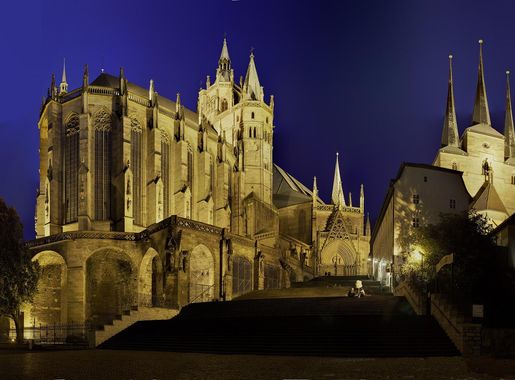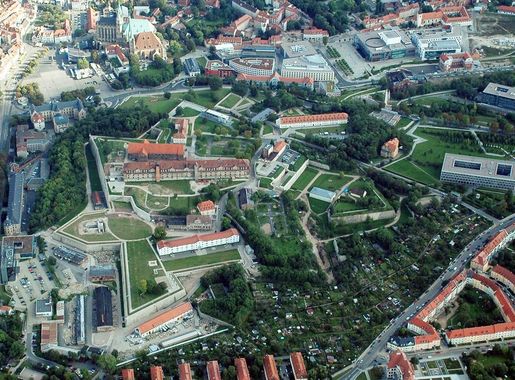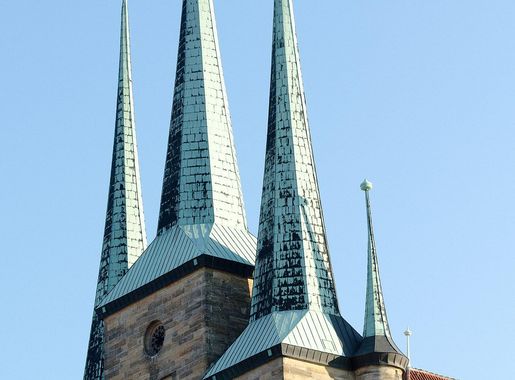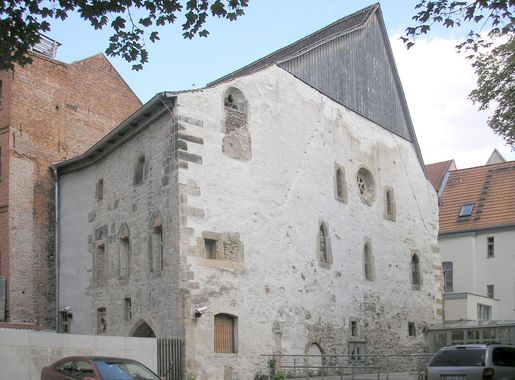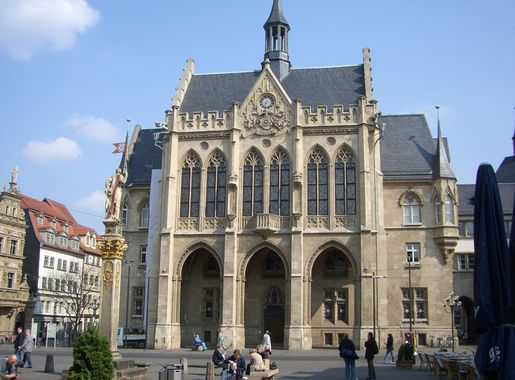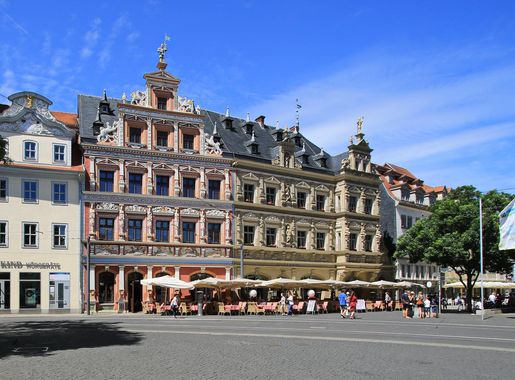
Altstadt: The Heart of Erfurt's Historical Charm
Discover the enchanting medieval charm of Altstadt in Erfurt, where history, culture, and vibrant local life blend seamlessly in a picturesque setting.
Altstadt, the Old Town of Erfurt, offers a picturesque journey through time with its well-preserved medieval architecture and cobblestone streets. As you wander through this enchanting neighbourhood, you'll encounter stunning half-timbered houses, impressive churches, and charming squares that capture the essence of Erfurt's rich history. At the heart of Altstadt is the Domplatz, a grand square dominated by the majestic St. Mary's Cathedral and the Church of St. Severus. These twin landmarks are a testament to the city's ecclesiastical heritage and provide a stunning backdrop for events and markets held throughout the year. Nearby, the Krämerbrücke, a medieval bridge lined with shops, is a must-see. It's the longest inhabited bridge in Europe and a unique place to discover local crafts and souvenirs. Altstadt is also known for its vibrant cultural scene. The area boasts a variety of museums, galleries, and theatres that showcase both historical and contemporary works. For those interested in local cuisine, the neighbourhood offers a plethora of traditional German restaurants, cafes, and beer gardens where you can savour regional delicacies and enjoy the warm hospitality of Erfurt's residents. As night falls, Altstadt's lively bars and pubs provide the perfect setting to unwind and experience the local nightlife.
Local tips in Altstadt
- Visit early in the morning to enjoy a quieter experience at popular sites like Domplatz and Krämerbrücke.
- Explore the local markets at Domplatz, especially during seasonal events like Christmas or Easter.
- Wear comfortable walking shoes; the cobblestone streets can be uneven.
- Consider a guided tour to learn more about the rich history and hidden gems of Altstadt.
- Try the traditional Thuringian bratwurst from a local vendor for an authentic culinary experience.
Altstadt: The Heart of Erfurt's Historical Charm
Altstadt, the Old Town of Erfurt, offers a picturesque journey through time with its well-preserved medieval architecture and cobblestone streets. As you wander through this enchanting neighbourhood, you'll encounter stunning half-timbered houses, impressive churches, and charming squares that capture the essence of Erfurt's rich history. At the heart of Altstadt is the Domplatz, a grand square dominated by the majestic St. Mary's Cathedral and the Church of St. Severus. These twin landmarks are a testament to the city's ecclesiastical heritage and provide a stunning backdrop for events and markets held throughout the year. Nearby, the Krämerbrücke, a medieval bridge lined with shops, is a must-see. It's the longest inhabited bridge in Europe and a unique place to discover local crafts and souvenirs. Altstadt is also known for its vibrant cultural scene. The area boasts a variety of museums, galleries, and theatres that showcase both historical and contemporary works. For those interested in local cuisine, the neighbourhood offers a plethora of traditional German restaurants, cafes, and beer gardens where you can savour regional delicacies and enjoy the warm hospitality of Erfurt's residents. As night falls, Altstadt's lively bars and pubs provide the perfect setting to unwind and experience the local nightlife.
Iconic landmarks you can’t miss
Domplatz
Experience the historic charm of Domplatz in Erfurt, a vibrant square surrounded by stunning architecture and rich cultural heritage.
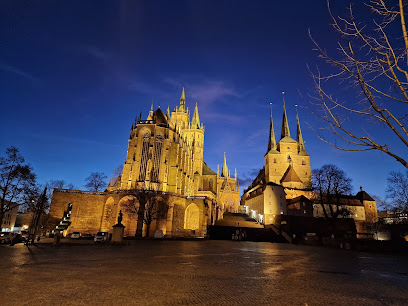
Erfurt Cathedral
Discover the architectural splendor and historical significance of Erfurt Cathedral, a must-visit Gothic landmark in the heart of Erfurt, Germany.
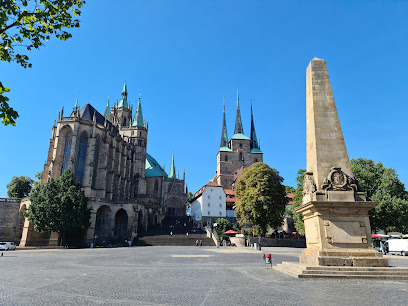
Protestant Augustinian Monastery Erfurt
Explore the rich history and serene beauty of the Protestant Augustinian Monastery in Erfurt, a key site in the Reformation movement.
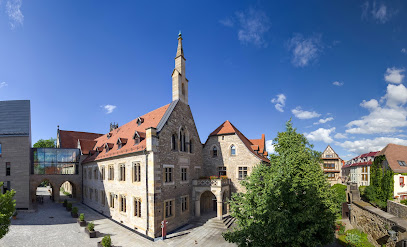
Old Synagogue
Explore the Old Synagogue in Erfurt, a historical gem that showcases the rich Jewish heritage of Germany through captivating exhibits and stunning architecture.

Der Römer
Explore Der Römer, a historical landmark in Erfurt, and immerse yourself in the rich culture and stunning architecture of this charming German city.
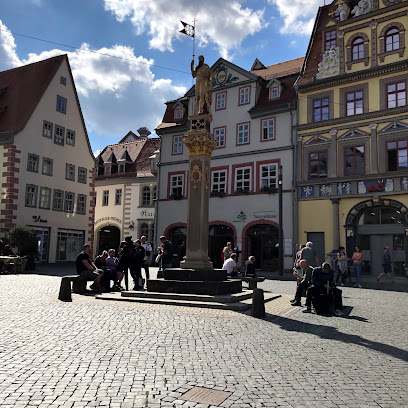
Das schmalste Haus Erfurts
Explore Das schmalste Haus Erfurts, an architectural gem in the heart of Erfurt's Old Town, showcasing the city's unique cultural history and charm.
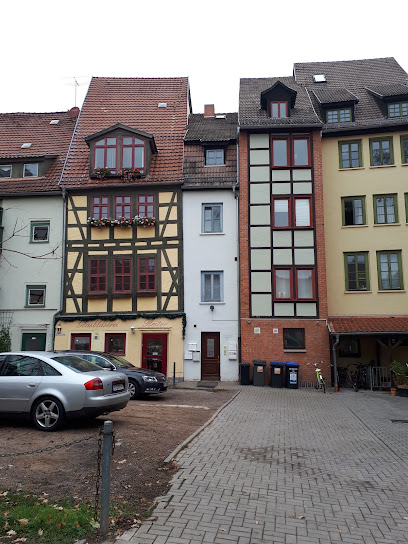
Dämmchen
Explore the serene beauty and cultural richness of Dämmchen, a hidden tourist gem in the heart of Erfurt, Germany.
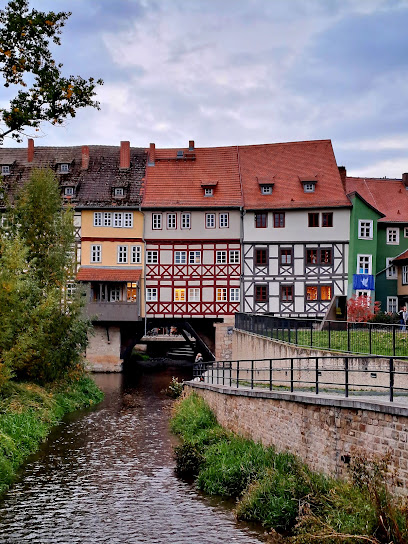
Brunnen Bremer Stadtmusikanten
Experience the enchantment of the Bremer Stadtmusikanten Fountain in Erfurt, a whimsical tribute to friendship and folklore.
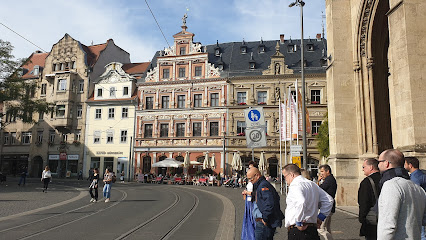
Wenigemarkt
Explore the enchanting Wenigemarkt in Erfurt - a historical square rich in culture, surrounded by stunning architecture and vibrant local life.
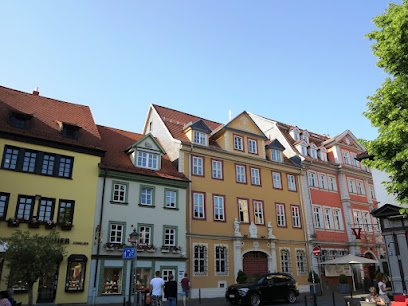
Denkmal Adam Ries
Explore the Adam Ries Monument in Erfurt, a remarkable tribute to the renowned mathematician, nestled in the historic Altstadt.

Unmissable attractions to see
Erfurt Cathedral
Discover the breathtaking beauty and rich history of Erfurt Cathedral, a stunning Gothic landmark in the heart of Erfurt, Germany.
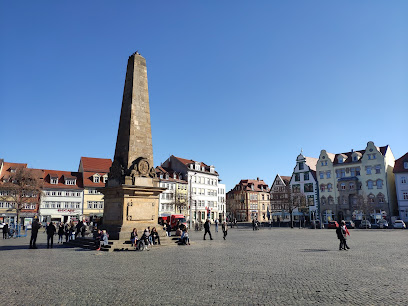
Old Synagogue
Explore the Old Synagogue in Erfurt, a historic landmark reflecting Jewish heritage and medieval architecture in a captivating museum experience.
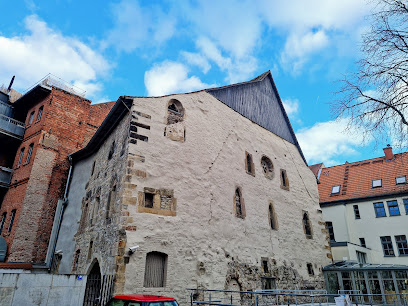
Der Römer
Explore Der Römer in Erfurt - a historical landmark that embodies the architectural beauty and rich culture of Germany.
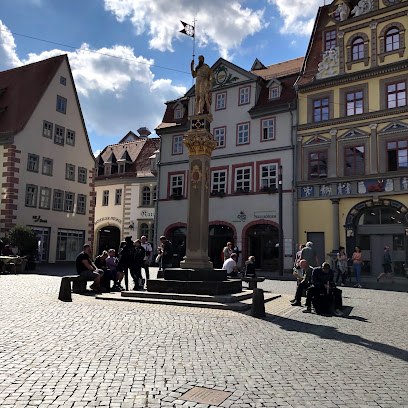
Wenigemarkt
Explore the enchanting Wenigemarkt in Erfurt, a vibrant market square rich in history, local culture, and delightful flavors.
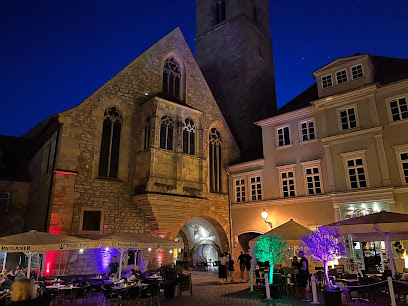
Erfurter Römer
Explore the historic Erfurter Römer, home to the iconic Roland statue and a gateway to Erfurt's rich medieval heritage.
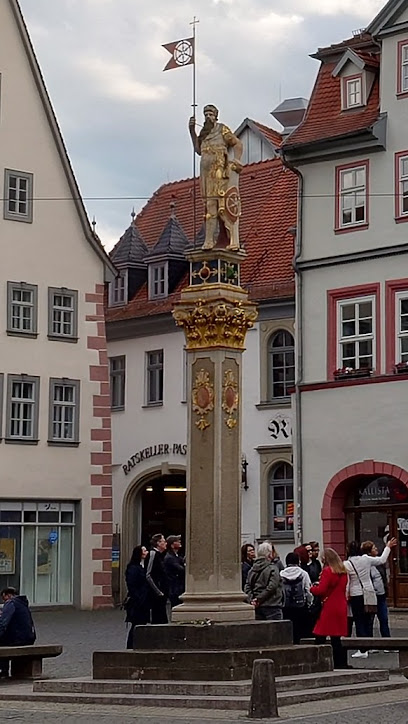
Animal figures
Explore Erfurt's enchanting animal figures – a whimsical attraction that reflects the city's artistic spirit and cultural heritage.
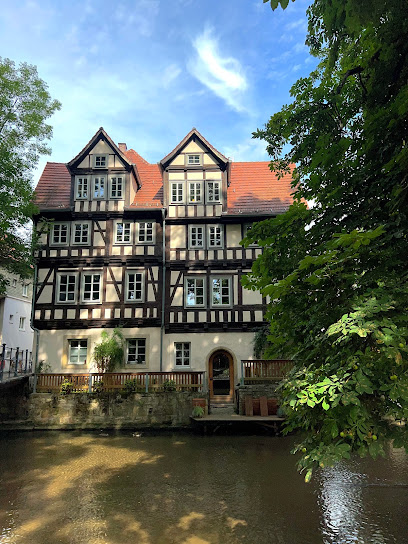
Essential places to dine
Wirtshaus Christoffel
Experience authentic Thuringian flavors at Wirtshaus Christoffel in Erfurt - where tradition meets comfort in every bite.
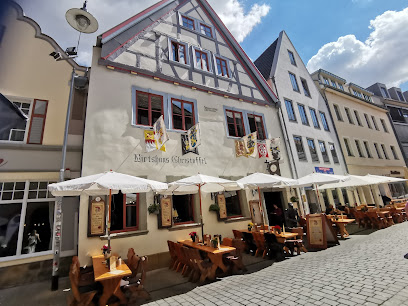
Ristorante Pavarotti
Experience authentic Italian cuisine at Ristorante Pavarotti in Erfurt – where every dish is crafted with passion and tradition.
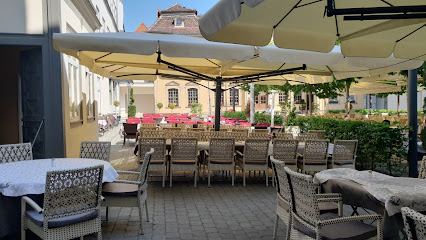
Restaurant Schnitzler Erfurt
Experience authentic German flavors at Restaurant Schnitzler in Erfurt's charming Altstadt, where tradition meets taste.
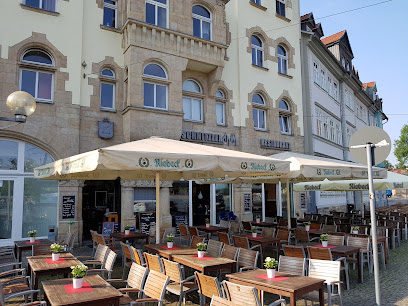
Zum Goldenen Schwan
Discover authentic Thuringian cuisine at Zum Goldenen Schwan in Erfurt - where tradition meets taste in a charming atmosphere.

Pier 37 - Genuss am Fluss
Discover exquisite German cuisine at Pier 37 - Genuss am Fluss in Erfurt; where local flavors meet stunning riverside views.
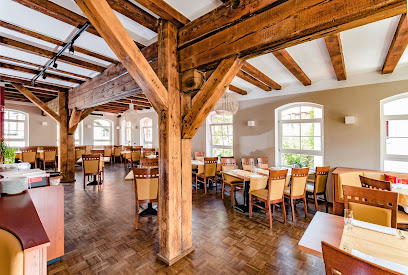
Kromer's Restaurant & Gewölbekeller
Discover the heart of German culinary tradition at Kromer's Restaurant & Gewölbekeller in Erfurt - where flavor meets history.
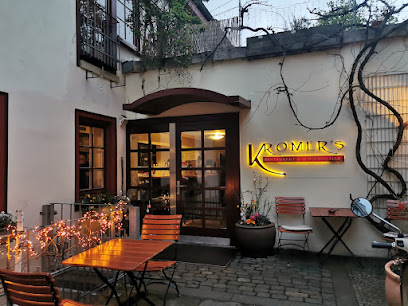
Zum Wenigemarkt 13
Experience authentic Thuringian flavors in Erfurt's historic Altstadt at Zum Wenigemarkt 13 - where tradition meets taste.

Wirtshaus am Dom
Experience authentic Thuringian cuisine at Wirtshaus am Dom in Erfurt – where tradition meets flavor in every dish.
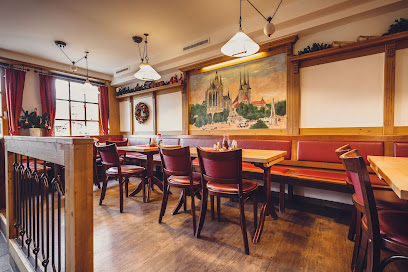
EAT Erfurt
Discover soulful flavors at EAT Erfurt, where traditional comfort food meets modern culinary artistry in Germany's picturesque city.

Roter Elephant Café & Restaurant - Erfurt
Experience culinary delights at Roter Elephant Café & Restaurant - A perfect blend of comfort and flavor in Erfurt's historic Altstadt.
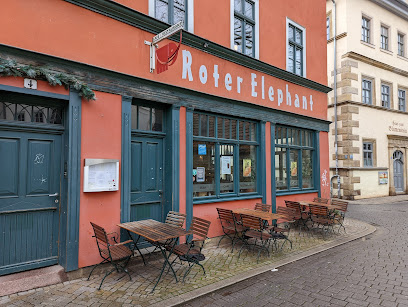
Markets, malls and hidden boutiques
ANGER 1 Erfurt
Discover the ultimate shopping experience at Anger 1 Erfurt, where local charm meets international brands in a vibrant atmosphere.
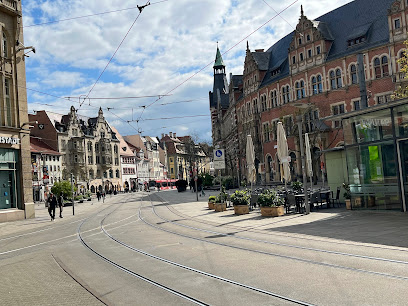
Elbenwald
Discover a magical gift shop in Erfurt, Elbenwald, where fantasy meets retail with unique clothing, toys, and collectibles.
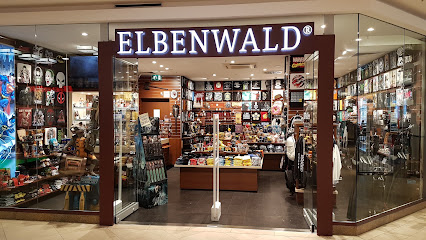
Echtjuterladen
Explore Echtjuterladen: A unique vintage clothing store and café in Erfurt blending fashion, history, and community spirit.
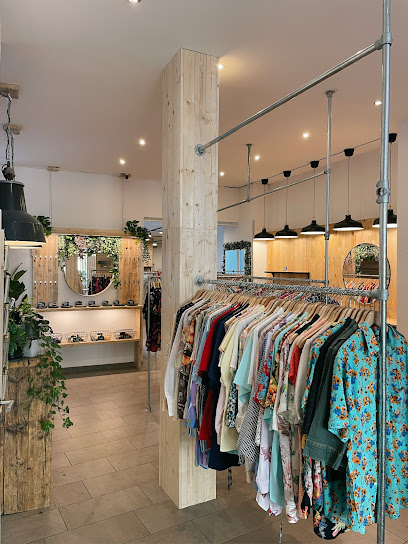
Taramar eG - Esoterik und farbenfrohe Mode
Explore Taramar eG in Erfurt for vibrant esoteric fashion that infuses spirituality into style, perfect for unique wardrobe additions.
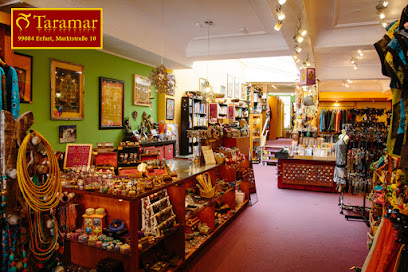
MISSKAUFLUST by Anja Scheinpflug
Explore the vibrant fashion offerings at MISSKAUFLUST, a unique clothing store in Erfurt showcasing local styles and accessories.

ERFURT MITTE
Discover unique gifts and local crafts at Erfurt Mitte, the heart of souvenir shopping in Erfurt, Germany.
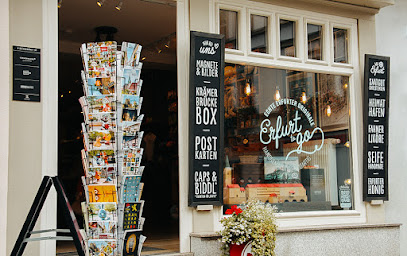
brink.
Explore Brink, Erfurt's charming gift shop offering unique novelties and second-hand treasures, perfect for memorable souvenirs.
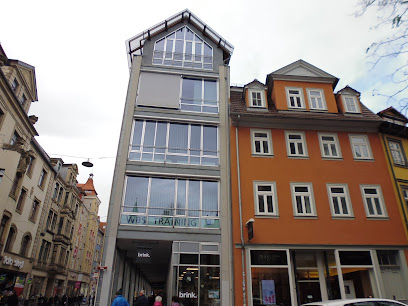
ConceptStore - KlausUndSo
Explore KlausUndSo Concept Store in Erfurt for unique gifts and local artistry that capture the spirit of the city.
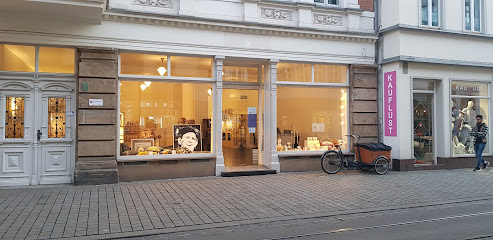
Das bunte Glück
Explore Das bunte Glück in Erfurt, a charming gift shop filled with unique souvenirs, stylish clothing, and local art that captures the essence of the region.
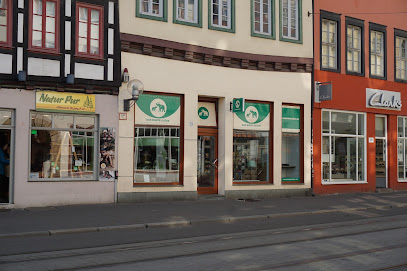
UniKate - 100% handmade - 100% ️❤️
Explore UniKate in Erfurt, where every handmade gift is a unique treasure, reflecting local artistry and sustainable craftsmanship.

Essential bars & hidden hideouts
Dubliner Irish Pub
Experience authentic Irish cuisine and vibrant nightlife at Dubliner Irish Pub in Erfurt, a top destination for tourists seeking local culture.

Molly Malone Irish Pub
Discover the vibrant spirit of Ireland at Molly Malone Irish Pub in Erfurt, where great food, drinks, and live music await.
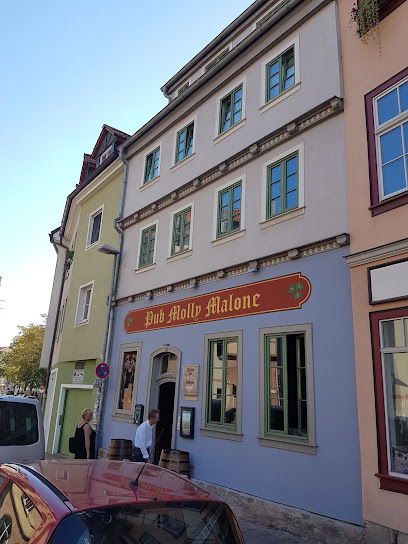
Hemingway Bar & Lounge - Erfurt
Discover the charm of Hemingway Bar & Lounge in Erfurt, where classic cocktails meet a cozy atmosphere, perfect for unwinding after a day of exploration.
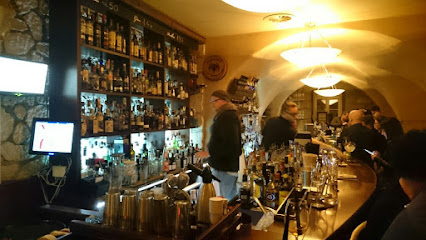
Patricks Irish Pub - Erfurt
Discover the lively spirit of Ireland at Patricks Irish Pub in Erfurt, offering authentic cuisine and a warm atmosphere for all visitors.
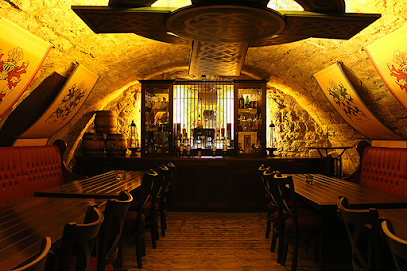
Speicher - Erfurt
Experience the lively atmosphere at Speicher, Erfurt's premier bar, blending local charm with a modern twist for an unforgettable night out.
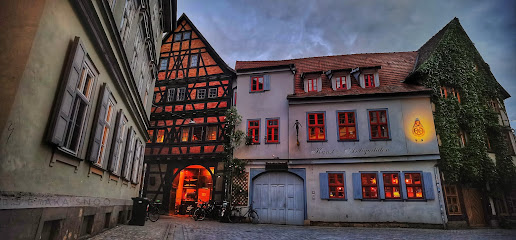
Tarantula - Erfurt
Experience the vibrant nightlife of Erfurt at Tarantula, a cozy bar and pub offering a wide selection of drinks in a welcoming atmosphere.
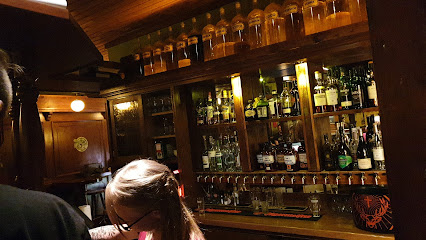
MODERN MASTERS Bar & Lounge
Experience the vibrant nightlife at MODERN MASTERS Bar & Lounge in Erfurt, where exquisite cocktails and a lively atmosphere await you.
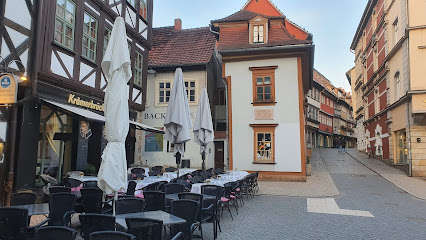
Karibik Bar - Erfurt
Discover the vibrant nightlife at Karibik Bar in Erfurt, offering a variety of beers and cocktails in a lively Caribbean-themed setting.
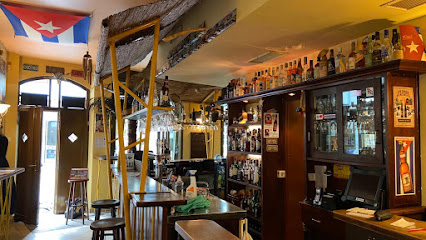
Whiskey Pub Johnny Worker - Erfurt
Experience the rich selection of whiskeys and vibrant atmosphere at Whiskey Pub Johnny Worker, the perfect spot for relaxation in Erfurt.
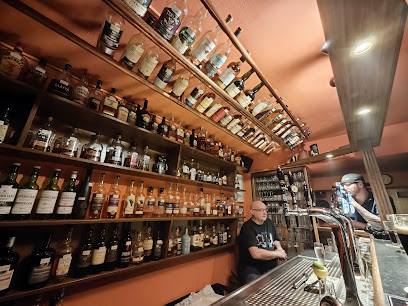
Bar Zwiesel - Erfurt
Discover the vibrant cocktail culture at Bar Zwiesel in Erfurt, where innovative drinks meet a lively atmosphere in the heart of the Altstadt.
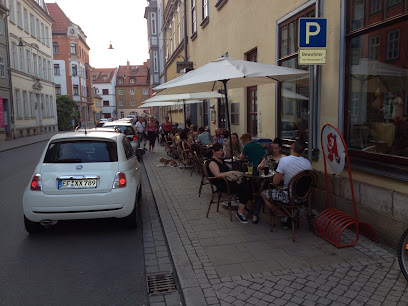
Local Phrases
-
- HelloHallo
[ha-lo] - GoodbyeAuf Wiedersehen
[owf vee-der-zay-en] - YesJa
[yah] - NoNein
[nine] - Please/You're welcomeBitte
[bit-teh] - Thank youDanke
[dahn-keh] - Excuse me/SorryEntschuldigung
[ent-shool-di-gung] - How are you?Wie geht es Ihnen?
[vee gate es een-en] - Fine. And you?Gut. Und Ihnen?
[goot oont een-en] - Do you speak English?Sprechen Sie Englisch?
[shpre-khen zee eng-lish] - I don't understandIch verstehe nicht
[ikh fer-shteh-eh nikht]
- HelloHallo
-
- I'd like to see the menu, pleaseIch möchte die Speisekarte sehen, bitte
[ikh merkh-te dee shpy-ze-kahr-teh zeh-en, bit-teh] - I don't eat meatIch esse kein Fleisch
[ikh es-se kine fli-sh] - Cheers!Prost!
[prohst] - I would like to pay, pleaseIch möchte bitte bezahlen
[ikh merkh-te bit-teh beh-tsah-len]
- I'd like to see the menu, pleaseIch möchte die Speisekarte sehen, bitte
-
- Help!Hilfe!
[hil-feh] - Go away!Geh weg!
[geh vehg] - Call the Police!Rufen Sie die Polizei!
[roo-fen zee dee po-lee-tsai] - Call a doctor!Rufen Sie einen Arzt!
[roo-fen zee i-nen ar-tst] - I'm lostIch habe mich verlaufen
[ikh hah-beh mikh fer-lou-fen] - I'm illIch bin krank
[ikh been krank]
- Help!Hilfe!
-
- I'd like to buy...Ich möchte kaufen...
[ikh merkh-te kou-fen] - I'm just lookingIch schaue nur
[ikh shou-eh noor] - How much is it?Wie viel kostet es?
[vee feel ko-stet es] - That's too expensiveDas ist zu teuer
[dahs ist tso toy-er] - Can you lower the price?Können Sie den Preis senken?
[ker-nen zee den preis zen-ken]
- I'd like to buy...Ich möchte kaufen...
-
- What time is it?Wie spät ist es?
[vee shpet ist es] - It's one o'clockEs ist ein Uhr
[es ist iyn oor] - Half past (10)Halb elf
[halb elf] - MorningMorgen
[mohr-gen] - AfternoonNachmittag
[nahk-mit-tahk] - EveningAbend
[ah-bent] - YesterdayGestern
[geh-stern] - TodayHeute
[hoi-teh] - TomorrowMorgen
[mohr-gen] - 1eins
[iyns] - 2zwei
[tsvai] - 3drei
[dry] - 4vier
[feer] - 5fünf
[fuhnf] - 6sechs
[zeks] - 7sieben
[zee-ben] - 8acht
[ahkt] - 9neun
[noyn] - 10zehn
[tsen]
- What time is it?Wie spät ist es?
-
- Where's a/the...?Wo ist ein/der...?
[vo ist iyn/dehr] - What's the address?Was ist die Adresse?
[vas ist dee ah-dreh-seh] - Can you show me (on the map)?Können Sie mir zeigen (auf der Karte)?
[ker-nen zee meer tsai-gen (ouf dehr kar-teh)] - When's the next (bus)?Wann kommt der nächste (Bus)?
[vahn komt dehr nekhs-teh (boos)] - A ticket (to ....)Eine Fahrkarte (nach ....)
[i-nuh fahr-kahr-teh (nakh)]
- Where's a/the...?Wo ist ein/der...?
History of Altstadt
-
The history of Altstadt, the old town of Erfurt, dates back to the early medieval period. Founded in the 8th century, it quickly became a significant trading hub due to its strategic location on major trade routes. The establishment of the Erfurt Monastery in 742 and the subsequent development of settlements laid the groundwork for what would become a vibrant urban center.
-
During the 12th and 13th centuries, Erfurt flourished as an important commercial city, particularly under the influence of the Holy Roman Empire. Altstadt was characterized by its well-preserved medieval architecture, including the iconic Krämerbrücke (Merchants' Bridge), which became a vital marketplace. The city also became known for its cloth trade, earning prosperity and attracting merchants from across Europe.
-
The 16th century saw Erfurt at the forefront of the Protestant Reformation, primarily due to the influence of Martin Luther, who studied at the University of Erfurt. This period was marked by significant religious tension within Altstadt, where Lutheran and Catholic factions vied for influence. The changes brought by the Reformation led to the establishment of numerous Protestant churches, contributing to the neighborhood's rich religious heritage.
-
The 17th and 18th centuries brought economic challenges to Erfurt, particularly during the Thirty Years' War, which devastated the region. However, the late 19th century marked a period of revitalization for Altstadt, with many historical buildings being restored and repurposed. This era solidified the neighborhood's historical significance and architectural beauty, making it a focal point for heritage preservation efforts.
-
Erfurt, including Altstadt, suffered significant damage during World War II. Post-war reconstruction efforts were critical in restoring the neighborhood's historical character. The GDR (German Democratic Republic) implemented extensive urban planning and restoration projects, which helped revive Altstadt while also modernizing its infrastructure. Today, the blend of historical architecture and modern amenities reflects Erfurt's resilience and dedication to preserving its cultural identity.
Altstadt Essentials
-
Altstadt, the historic old town of Erfurt, is easily accessible from other neighborhoods within the city. If you're arriving by train, Erfurt Hauptbahnhof (main station) is the primary entry point. From there, you can take tram line 1 or 6, which will take you directly to the Altstadt. Alternatively, local buses also connect the main station to various points in Altstadt. If you're coming from the airport, a taxi or shuttle service can take you to the city center in about 15-20 minutes.
-
Altstadt is a compact area, making it ideal for exploration on foot. Most attractions, including the Erfurt Cathedral, Krämerbrücke, and Augustinerkloster, are within walking distance. For longer distances, you can use the local tram and bus services, which are frequent and reliable. Bicycle rentals are also available, allowing you to explore the picturesque streets and parks at your own pace. The city is bike-friendly, with dedicated lanes and routes.
-
Altstadt is generally a safe neighborhood for tourists. However, like any urban area, it is wise to remain vigilant, especially in crowded places. Petty crimes such as pickpocketing can occur, particularly around popular tourist spots. It's advisable to avoid poorly lit areas at night and be cautious in less crowded streets. There are no specific high-crime areas targeting tourists, but exercising common sense is always recommended.
-
In case of an emergency, dial 112 for police, fire, or medical assistance in Germany. The local hospital, Universitätsklinikum Erfurt, is equipped to handle medical emergencies. It's recommended to have travel insurance that covers health issues. For non-urgent medical needs, pharmacies (Apotheken) can be found throughout Altstadt, many of which have on-call services after hours.
-
Fashion: Do dress modestly, particularly when visiting religious sites. Don't wear overly casual attire like beachwear. Religion: Do respect local customs and traditions. Always remove your hat when entering churches. Public Transport: Do be courteous and offer your seat to the elderly. Don't talk loudly or play music on public transport. Greetings: Do greet locals with a friendly 'Hallo' or 'Guten Tag.' Don't forget to say 'Danke' when someone helps you. Eating & Drinking: Do try local specialties such as Thüringer Bratwurst and enjoy regional wines. Don't eat or drink in places where it is prohibited, such as public transport.
-
To experience Altstadt like a local, visit the weekly markets at Anger Square, where you can find fresh produce and local delicacies. Engage with local artisans along Krämerbrücke, where you can find unique handcrafted goods. Attend local events or festivals if your visit coincides with them, as they showcase Erfurt's rich culture and community spirit. Don't miss out on enjoying a coffee at one of the quaint cafés along the banks of the river, where you can relax and soak in the atmosphere.
Nearby Cities to Altstadt
-
Things To Do in Leipzig
-
Things To Do in Wurzburg
-
Things To Do in Karlovy Vary
-
Things To Do in Nuremberg
-
Things To Do in Hannover
-
Things To Do in Rothenburg ob der Tauber
-
Things To Do in Dresden
-
Things To Do in Frankfurt
-
Things To Do in Potsdam
-
Things To Do in Plzeň
-
Things To Do in Berlin
-
Things To Do in Heidelberg
-
Things To Do in Koblenz
-
Things To Do in Munster
-
Things To Do in Prague

